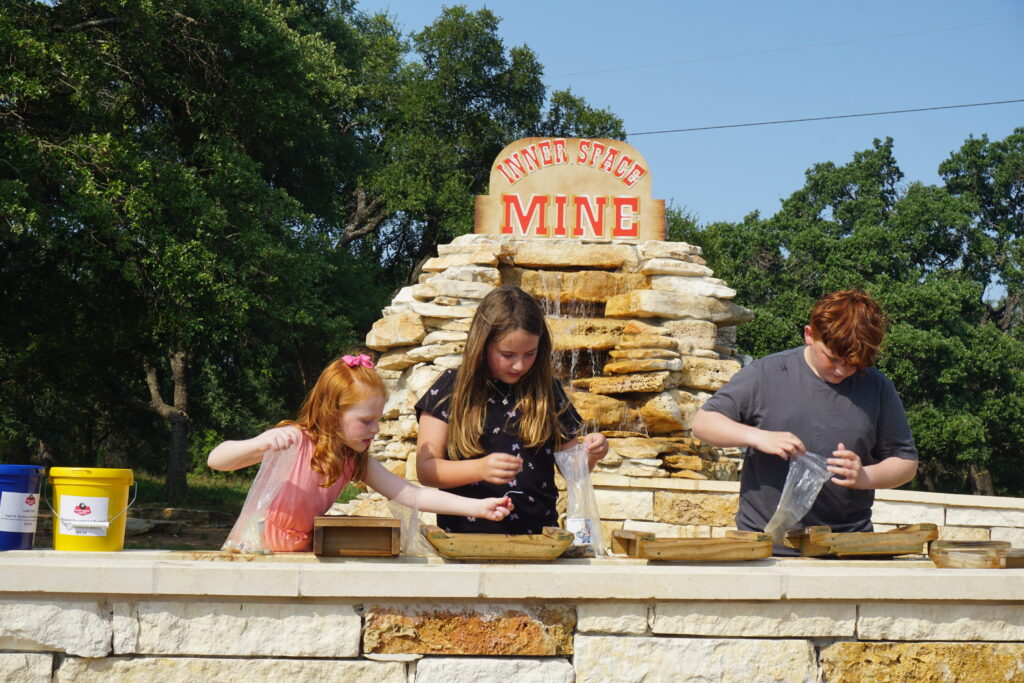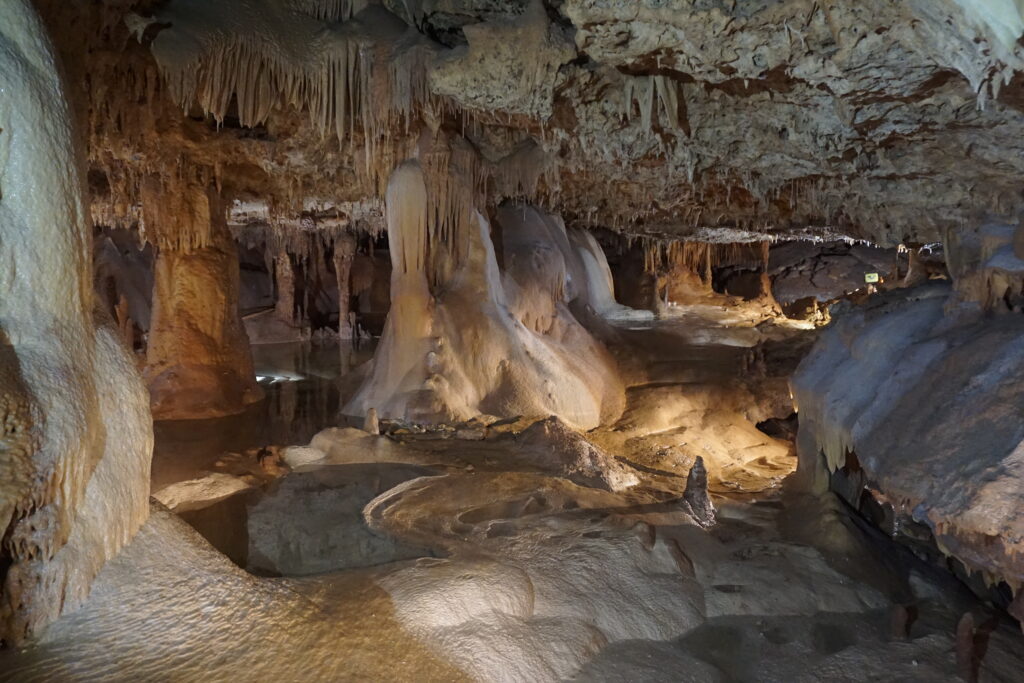Secrets of Inner Space Cavern
Inner Space Cavern, discovered in 1963 during highway construction, is more than just a geological wonder — it’s a portal to an ancient past. When the Texas Highway Department drilled into the limestone, they unknowingly opened a window into the Ice Age. Scattered across the cave floor were bones of prehistoric creatures, remnants of a time when mammoths, giant armadillos, and saber-tooth cats roamed what is now Williamson County.
Paleontologist Dr. Bob Slaughter was among the first to step inside, collecting bones that were scattered across the cave floor — no digging required. His focus was on large mammals: towering mammoths, prehistoric peccaries, and the armored glyptodont, a distant relative of the armadillo. Later, Dr. Ernest Lundelius expanded the research, uncovering remains of smaller animals, including deer mice, turtles, and prairie dogs. These finds painted a picture of a very different Central Texas — one with thick soils, abundant water, and a cooler, wetter climate.

During his research as a paleontology Ph.D. candidate at the University of Texas at Austin, John Moretti’s work at Inner Space has pushed the timeline back even further. He is one of the latest researchers to descend into this ancient archive, unearthing the tiniest remains yet: snakes, lizards, and songbirds. These fossils, washed in through ancient sinkholes, reveal a Central Texas far wetter and more temperate than the one we know today. John’s excavations have revealed fossils more than 29,000 years old — one of the oldest warm-period records from any cave in Central Texas. Among his most exciting finds? Bones from the feet and legs of an Ice Age jaguar. “Those big cats were closer in size to living lions than to living jaguars,” John says. “Imagine that big cat lurking in the shadows underground!”
How did the fossils get here?
Despite the wealth of fossils, most of the animals found in Inner Space Cavern never lived inside it. John explains that the cave acted as a natural trap, its five sinkholes serving as portals through which bones, carcasses, and even living animals entered — whether by accident or through natural forces. Some creatures, like big cats or peccaries, may have used the cave for shelter, only to perish inside. Others were washed in by floods, their remains accumulating in layers of clay and sediment. Owls, too, played their part, leaving behind the bones of their prey in the form of owl pellets.
The cave was not always the dry, silent place it is today. During the Ice Age, it was likely damp, with pools and streams flowing through its chambers. And it was far from empty. “The smell of ammonia would have been overwhelming, the floor would be covered with deep piles of guano and associated flesh-eating beetles. The ceilings in some areas were likely covered with roosting bats, and the sinkhole entrances would have streamed with bats leaving each evening to forage overnight,” John says. It was a thriving, if eerie, ecosystem — a stark contrast to the tourist-friendly caverns of today.
Living time capsule
Decades of excavation have only scratched the surface of what Inner Space Cavern has to offer. Beneath layers of clay lie untouched fossils, waiting for the right hands to uncover them. One of the cave’s largest talus cones — an ancient pile of sediment and bones — is 25 meters wide and 16 meters tall.

For John, the cave is more than a research site — it’s a gateway to understanding how life in Texas has evolved. His work helps answer big-picture questions: Why do we have raccoons and rattlesnakes but not mammoths and saber-tooth cats? What happened to the deep, rich soils of the past? How did species adapt — or fail to adapt — to shifting climates? “Fossil by fossil, places like Inner Space Cavern teach us how nature works.”
Preserving the past for the future
None of this research would be possible without the stewardship of Inner Space Cavern’s staff and the Laubach family, who own the land. Their commitment to preservation allows scientists to continue their work while ensuring the cave’s natural history remains intact for future generations. “They make me feel like family,” John says. “Without their support, we wouldn’t know half of what we do about the ancient past of this region.”
As he wraps up his Ph.D., John prepares for the next step — defending his years of research before his colleagues. But his time at Inner Space Cavern has left an indelible mark, both on his career and on the field of Texas paleontology. And as the cave continues to reveal its secrets, one thing is certain: the story of Inner Space Cavern is far from over. “Every time paleontologists explore Inner Space Cavern, they find new fossils and more species,” John says. “There are no bounds on what the cave can teach us about the history and heritage of Central Texas.”
